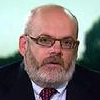Federal Reserve Chairman Jerome Powell faces a tough task on Wednesday, trying to steer clear of word choices that might kickoff a market overreaction, economists said. Making his life tougher is the fact that Wall Street is already unhappy with some of Powell’s recent communications efforts.
Powell has a “fine line” to walk, with policy firmly on hold, said Ellen Zentner, chief U.S. economist at Morgan Stanley.
“If Powell sound too optimistic, it might spark market concern the next move is a hike,” she said.
And on the other hand, if Powell presses the point that inflation is running low, “he runs the risk of confirming market expectations that the next move is a cut and imply that that cut is not far in the offing,” Zentner said.
Over the past six weeks, Fed officials have stressed that they will be “patient” and don’t want to move interest rates until they are certain about the economic outlook. Many economists think the Fed will be on hold for a long time, through the end of 2020, in some cases.
Stephen Stanley, chief economist at Amherst Pierpont, thinks the Fed is only firmly on hold for the next three meetings.
Regardless of the length of the “on-hold” policy, the Fed is now going to look through the most recent data, which show a stronger-than-expected first-quarter GDP growth, and soft core PCE inflation, economists said.
Read: Economy grows 3.2% in first quarter, GDP shows
Given that the U.S. central bank won’t release any new economic forecasts, and with the policy statement expected to remain relatively constant, Powell’s press conference is the main event this week. It is scheduled for Wednesday at 2:30 p.m. Eastern.
The problem Powell faces is the market doesn’t like the way he’s communicated over the last six months, economists said.
“There is not a lot of love” for the Fed chairman on Wall Street, said Michael Gapen, chief U.S. economist at Barclays.
“Mr. Powell is a very thoughtful and articulate in person. But his extemporaneous choices of adjectives and adverbs has caught the market cross-footed and people hold him accountable for that,” agreed Carl Tannenbaum, chief economist at Northern Trust.
Last October, Powell told Judy Woodruff of the PBS NewsHour, in unscripted remarks, that the Fed’s benchmark interest rate was “a long way” from neutral. Stocks DJIA, +0.04% swooned as investors say the central bank pushing rates up further.
Then in November the Fed chairman reversed course and said rates were “just below” neutral, although underlying conditions had not changed.
By late December, the Dow was off 18.77% from its record close. But the Fed reversed course and announced an end to its quantitative tightening program. The index is now up 22% from late December.
“I didn’t think at the time it was a big deal. But ex-post-facto its hard to argue it wasn’t a big event,” said Tom Simons, senior money market economist at Jefferies.
Opinion: The stock market made President Trump and the Fed’s Powell blink


